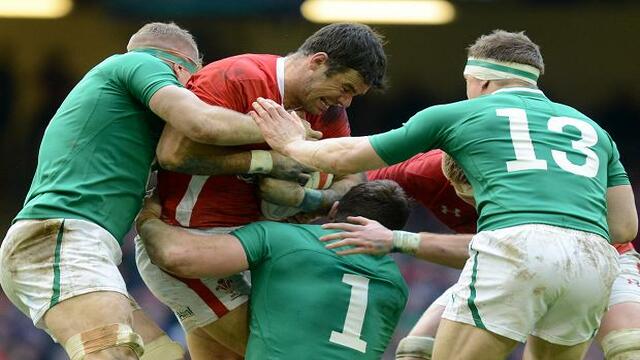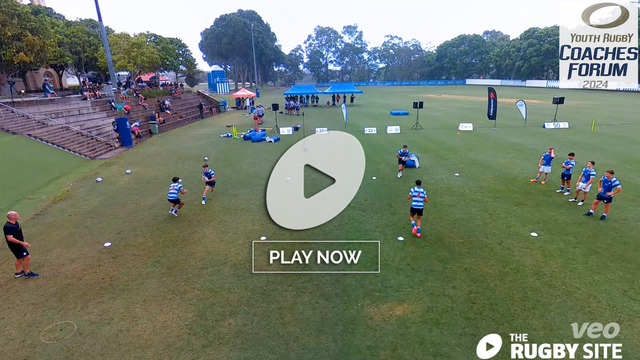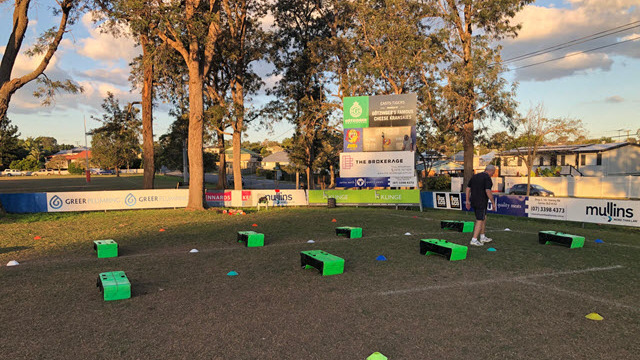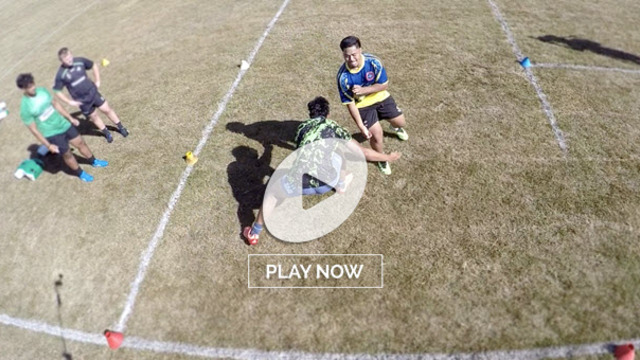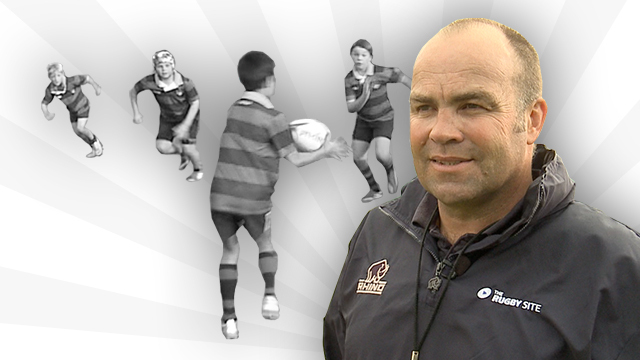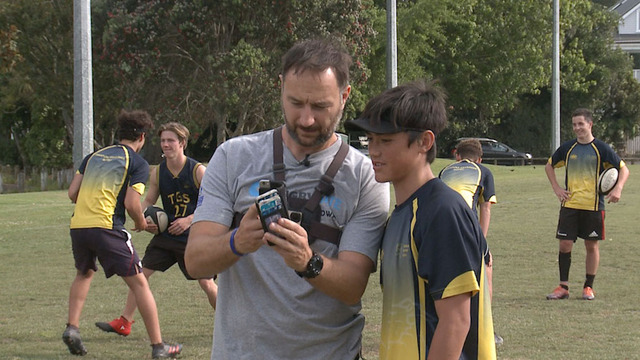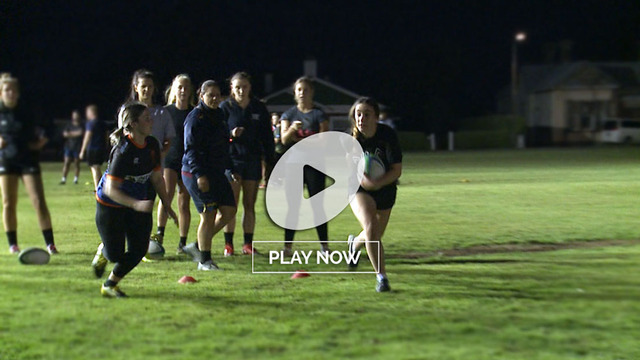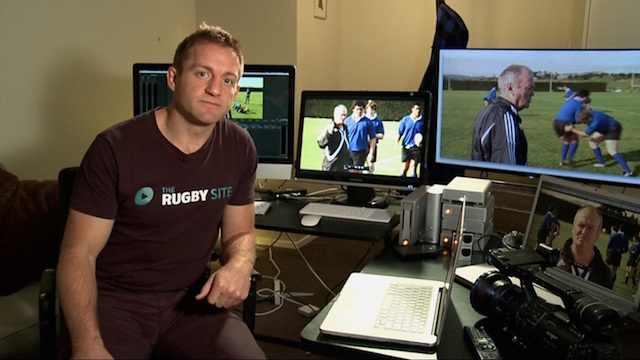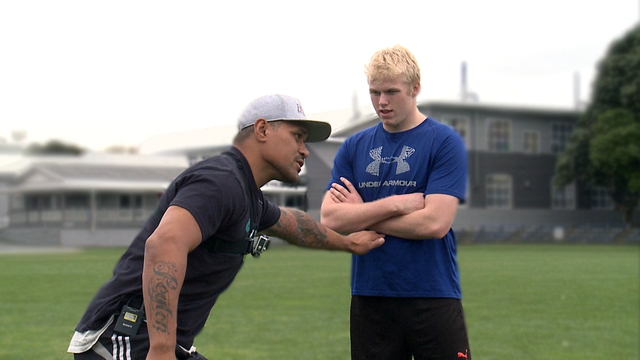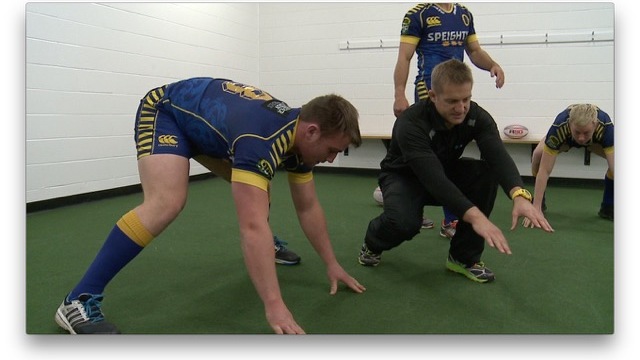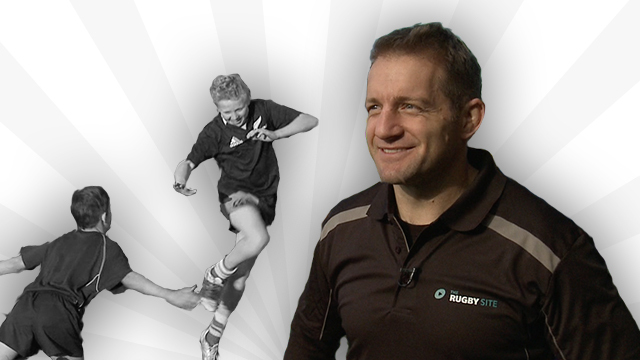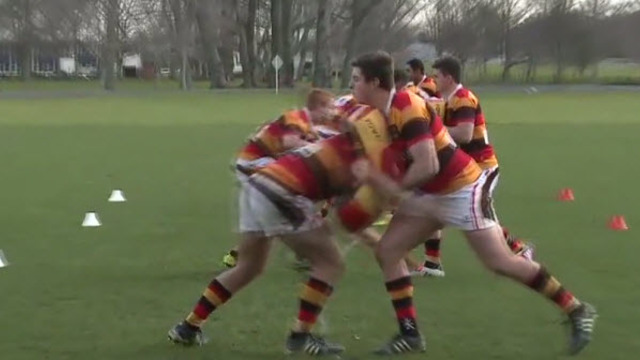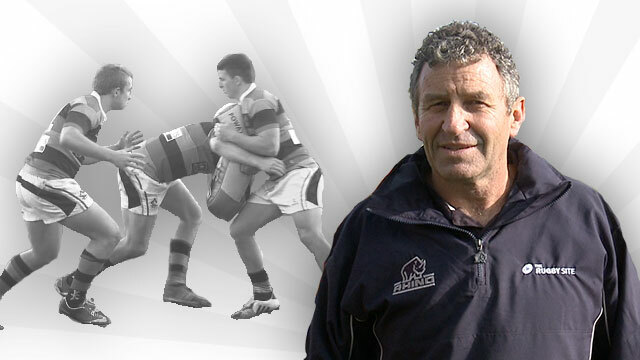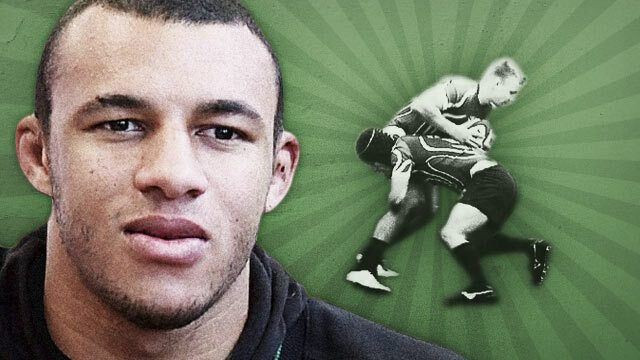The choke tackle has become a common feature of rugby in recent years, with the Irish national side among the leading proponents of the defensive skill. The term ‘choke tackle’ refers to the specific skill of holding a tackled player up off the ground, turning the contact situation into a maul and earning a turnover scrum in reward. Here in Ireland, players like Donncha O’Callaghan, Jamie Heaslip and Jonny Sexton are particularly strong in this area.
Since taking over as defence coach of the national team in 2008, former Australian rugby league star Les Kiss has been working with the Irish players on the choke technique, and it has proved decisive on many international occasions, as well as for Ireland’s provincial sides in European club rugby.
Watch Richie McCaw on ‘Tackle Techniques’
The peak of Ireland’s choke tackling so far was 2011’s shock victory over Australia at the Rugby World Cup, when Sean O’Brien and Stephen Ferris wrapped up almost everything the Wallabies threw at them. It’s a hugely effective defensive technique when carried out accurately, but is there anything the attacking team can do to prevent its effectiveness.
At times, the choke tackle has an air of inevitability about it. While there are many failed attempts to create mauls while defending in open play, there are also those occasions where the choke is initiated and it looks like there is nothing the attacking team can do to retain possession. What is the difference between those failed attempts and the times when the attacking side manages to rescue the situation.
The first and most obvious one is the ball carriers’ fight in contact. Swiftly recognizing that they have got themselves into a poor position is key to not getting turned over. Upper body strength is naturally very important to being able to wrestle out of the defender’s grip, but it is a technique-related issue too, and these situations should be included in training even if it is only briefly as part of a warm-up.
Watch Courtney Lawes on ‘Ball Carrying & Clearout’
Fighting to the ground is something that goes against the majority of rugby players’ instincts, especially as most will have always been taught to work as hard as possible to stay on their feet and not accept the tackle. However, overcoming that pride and accepting a loss from time to time is important in avoiding the choke tackle.
Again more practice will allow players to recognize that the defender is close to getting into an advantageous position, and allow them to get to deck before it is too late. Fighting to the ground doesn’t necessarily mean just losing your feet and hoping to fall to the deck. The bear hug nature of the choke tackle makes such an action pointless, and actually helps the defending player to ensure a turnover.
Instead, the fight must consist of an aggressive, explosive series of bursts from the attacking player to force himself to the deck. The bursts can consist, of course, of a dynamic effort to drive forward and through the tackle, but they can also consist of the attacker ripping himself backwards out of the defender’s grasp. True, this is accepting a slight loss of momentum, but crucially possession is more likely to be retained.
Watch Mike Cron on ‘Scrum and Ruck Conditioning (Drills to build neck and core strength)’
Those are individual responsibilities for the ball carrier, but there is also an onus on the support players to recognize and help avoid the choke tackle turnover. Quick counteraction is once again the most important element of the response. Helping the ball carrier to the ground is the primary goal once again, but this player has a few more choices.
An early leech (or latch) onto a ball carrier is an effective way of helping him over the gain line, but it is most efficiently started pre-contact. We are dealing with a post-contact situation here, but some of the same skills are relevant.
If a choke tackle has been initiated, a powerful leech from a support player in attack can often smash the held-up carrier onto the floor. However, that doesn’t necessarily solve the problem of the defender who has his hands firmly on the ball.
The more accurate the support player is with his leech, the more likely a turnover will be avoided. While we are talking about split-second decisions here, targeting the defender’s arms would be an ideal scenario. Alternatively, targeting the defender’s upper body could be more effective than leeching onto the teammate’s body. Remove the defender who is attempting to make the choke, or one of his teammates, and the risk of a turnover is instantly lessened.
Instantaneous, almost instinctive, reactions are needed as all of the above can unfold in a second or so. Sharp natural responses are important, but players can certainly improve the speed of their counteraction if they train specifically towards that goal.
That does not mean dedicating an hour of a team’s pitch session to anti-choke tackle techniques. Five to ten minutes of focused work a handful of times during the week would be enough. As mentioned before, any drills to do with this area of the game could be incorporated into a team’s warm-up. That would also allow practice and technique work on the defensive elements of the choke tackle.
How else can the choke tackle be avoided? Is it a pre-contact issue, where not running straight into defenders is the key? How do you coach your players in regards to the choke tackle and fighting their way out of it? Feel free to leave your thoughts in the comments section below.
